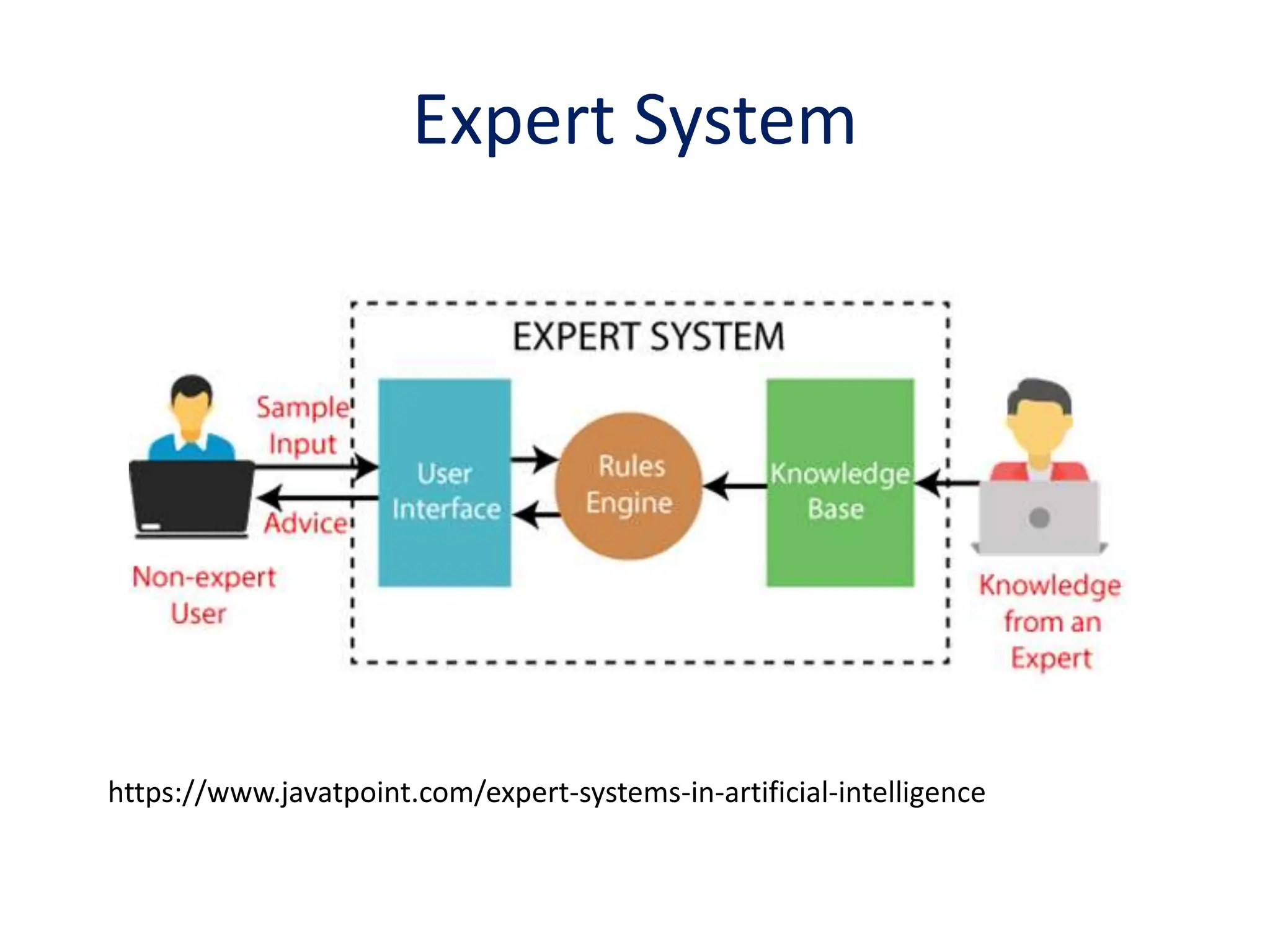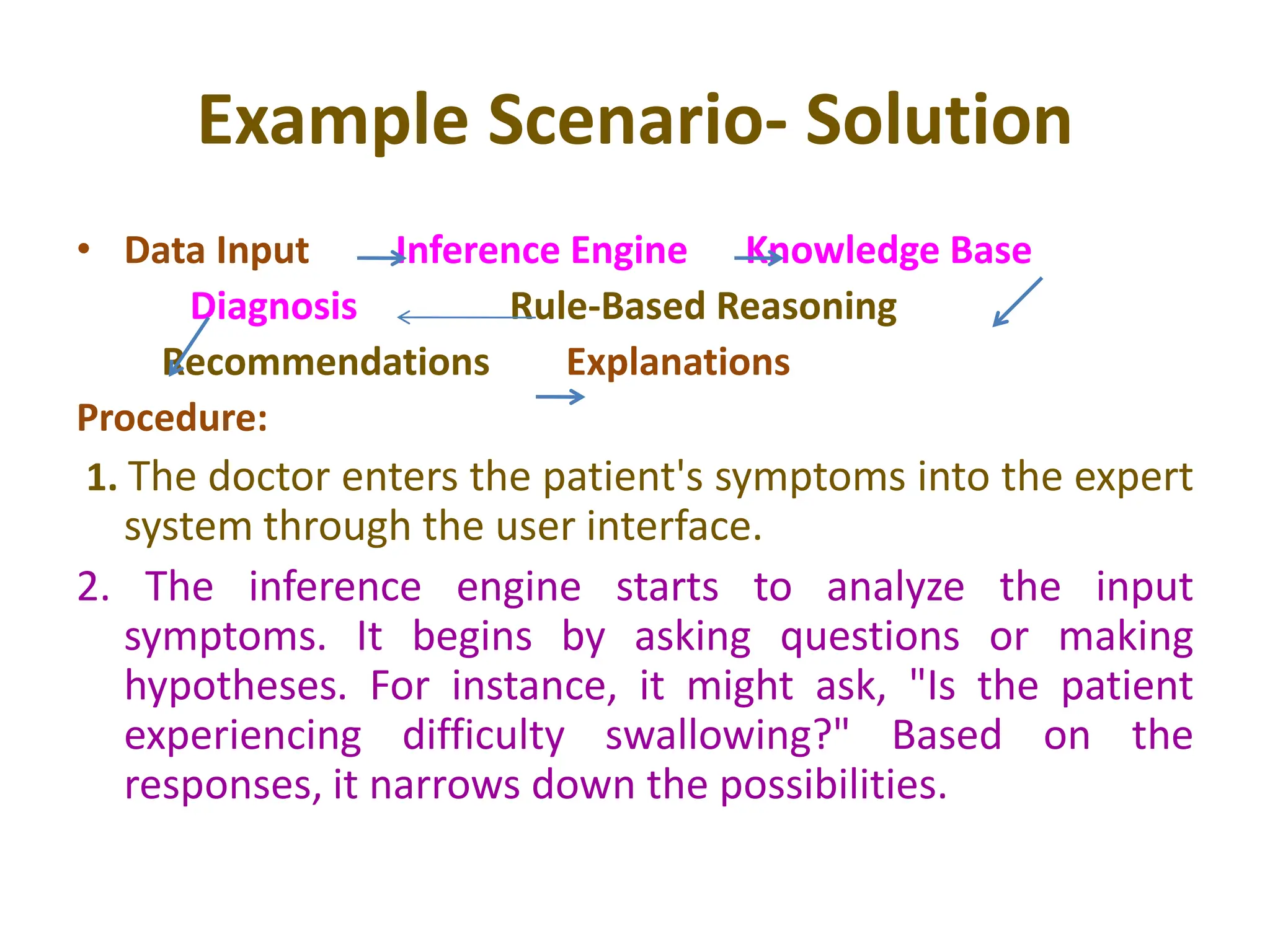The document discusses expert systems in artificial intelligence. It describes what an expert system is and its key components, including the knowledge base, inference engine, and user interface. The document provides examples of various expert systems such as MYCIN, DENDRAL, and Watson. It also discusses probability-based expert systems and provides an example of a medical diagnosis expert system.







































